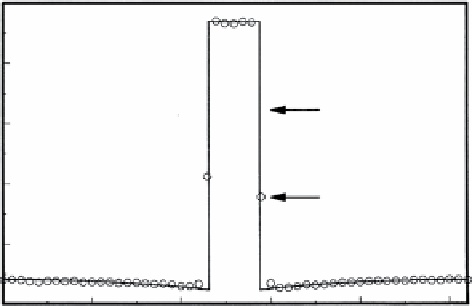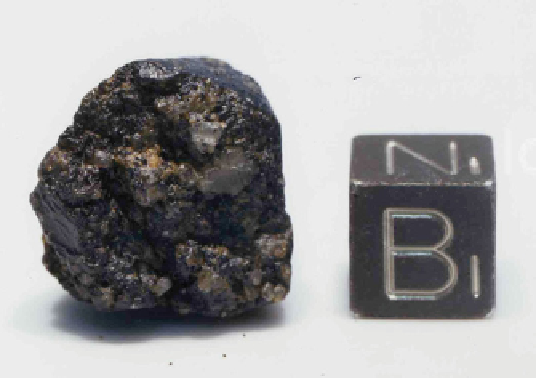Geology Reference
In-Depth Information
Angrite
6.91 g
Found January 12, 1987
1.5 × 1.5 × 1.5 cm
Weathering = A/B
isotopic values similar to, but distinct from, the HED group of meteorites.
Their Feo-rich and volatile depleted characteristics are reflected in the
Feo-rich clinopyroxene, fayalitic olivine, and calcic plagioclase. The low
concentrations of core-loving elements such as Ni, Co, and W suggest
they are from a small body that underwent core formation. Some have
proposed a link between angrites and the iVB irons, originating from a
relatively oxidized asteroidal parent body.
LEW86010
6
50
LEW 86010
Lamella LM1
Best-fit cooling rate
px
40
4
Calculated
(50°C/yr)
30
2
20
m
= (4.80 ± 0.42) × 10
-5
i = -1.0 ± 0.7
Δ
t
CAI
= 9.0 ± 1.3 Myr
t
D'Orb
= 4558.3 ± 1.2 Ma
Observed
0
10
ol
-2
0
0
4
8
180
Hf/
184
W
12
0
10
20
30
40
50
Distance (
µ
m)
Plate 53
MiNERALogy
SigNiFiCANCE
LEW 86010 consists of plagioclase (An
100
), clinopyroxene,
and olivine, with a trace of opaques, in a granular texture
of 0.5 to 2.5 mm grain size. Reddish purple clinopyroxene
( Wo
56
Fs
19
) is fassaitic with 10.4 wt.% Al
2
o
3
and 2.4 wt.%
Tio
2
. olivine (Fa
63
) has 1.5 to 2.6 wt.% Cao and contains
exsolution lamellae of kirschsteinite (Ca[Mg,Fe]Sio
4
).
LEW 86010 records an age of approximately 4558 Ma
(left, [390]), which helps define the age limits of this group
of meteorites that formed by ancient differentiation in a
planetesimal. The kirschsteinite exsolution lamellae
record cooling rates of ~ 40-50°C/year, implying depth of
formation of 75 m (right, [392]).
References [388-393]




